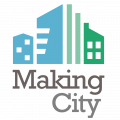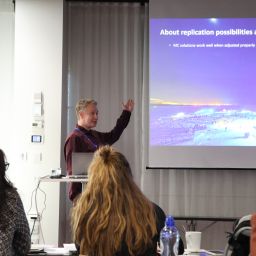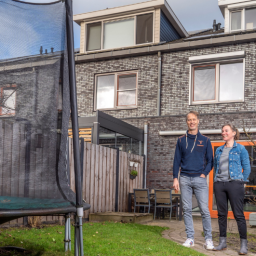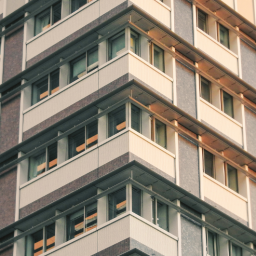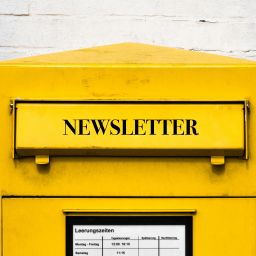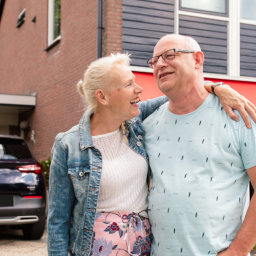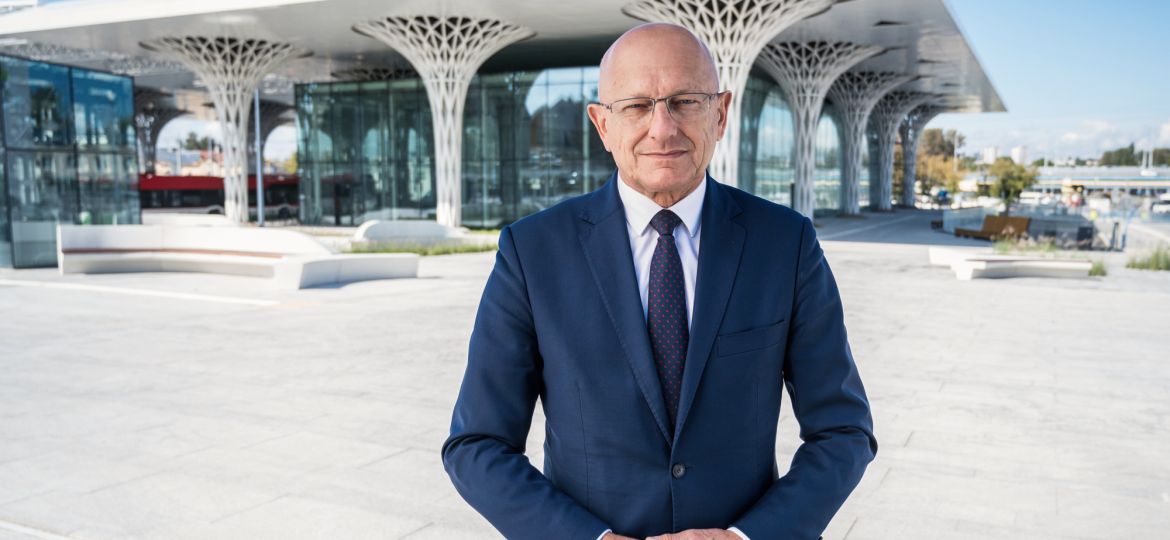
This success story is part of a series published within the MAKING-CITY project. The series aims to showcase the experiences of key stakeholders within the project. This story explores how Lublin achieves sustainability in its public transportation. It features an interview with PhD Krzysztof Żuk, Mayor of Lublin City, discussing the city’s approach.
INTRODUCE YOUR ROLE IN LUBLIN’S JOURNEY TOWARDS A CARBON-NEUTRAL FUTURE
We have been changing Lublin together for 13 years now, and I am proud of what we have achieved. We have implemented the Lublin Development Strategy 2013-2020 that I spoke of when I first canvassed for the trust of the citizens of Lublin. At that time I promised changes that would bring Lublin into the first league of Polish cities, today we are a modern metropolis that takes care of all its residents.
Since 2010, Lublin has been through a huge metamorphosis. Coordinated and well-thought-out actions have made it possible to change the image of the city and rebuild it not only economically, but also in terms of the quality of everyday life. We have a clearly delineated strategy for the development of Lublin until 2030, worked out together with the residents. I feel obliged to fully implement it.
There are new challenges facing the city. One of them is to achieve climate neutrality, crucial from the perspective of shaping the future of Lublin and the quality of life of its residents. It lays the foundation for development, guarantees security and creates new social and economic prospects, including for innovative economic development. The city of Lublin has been developing in a sustainable manner for a long time, if only because of the launch of the low-carbon transportation network more than 10 years ago. Today, the goals in this area are much more ambitious, and, above all, cover far more areas of the city’s functioning, as you can just read about in the Lublin 2030 Strategy.
HOW HAS THE DEVELOPMENT OF ZERO-EMISSION TRANSPORT IN LUBLIN PROGRESSED, AND HOW DOES IT ALIGN WITH BROADER ENVIRONMENTAL OBJECTIVES?
The tradition of electromobility in Lublin dates back to the middle of the last century, when the first trolleybus, an electrically powered bus connected to traction, hit the streets of the city. Of course, the vehicles of that time were different from those we can meet on the streets of Lublin today, but this experience made it easier for us to electrify the fleet.
2015 turned out to be a breakthrough year, when the city purchased its first fully electric bus. Thanks to subsequent investments in green public transportation, today Lublin is one of the Polish and European leaders in zero-emission public transportation. The city already has a 40% share of zero-emission vehicles in its entire fleet – the current system counts 99 trolleybuses and 40 electric buses. A hydrogen bus has also been running on the streets of Lublin since last year. The plan is to purchase another twenty hydrogen-powered vehicles. In the new EU perspective, we assume further development of electromobility and the purchase of about 100 zero-emission vehicles.
Another important moment for the development of Lublin’s transportation was the signing last year of an agreement to purchase energy generated from 100% renewable energy sources to power trolleybuses and electric bus chargers. Given the benefits of this solution, the next contract for the purchase of green energy will be in effect until the end of 2025.
However, public transportation is not just vehicles, but the entire complex system, so we are committed to optimizing it holistically so as to encourage residents and other travelers to change their transportation habits and actively use public transportation, including public bicycles. One of the stages of this plan is the optimization of public transportation routes and schedules. It was preceded by public consultations and analyses planned in parallel with the launch of the modern and multifunctional Lublin Station – Dworzec Lublin, a key investment for the city and the region. Its goal is to develop and improve the public transportation system, integrating different types of public transportation, not only in Lublin, but also in the Lublin Functional Area, which includes neighboring municipalities.
WHAT INSPIRED THE CONCEPT OF LUBLIN STATION, AND WHAT ENVIRONMENTAL IMPACT DO YOU ANTICIPATE FROM IT?
We wanted to create an integrated transportation center in Lublin, which will provide convenient public transportation travel for residents of the city and region. Today, the Lublin Station, which was built with European funding, combines public transportation with regional and long-distance transportation. It was built next to the train station, thus further integrating bus and rail transportation, while revitalizing the area where it is located so that it becomes traveler and resident friendly.
The Lublin Station was designed to be one of the most environmentally friendly facilities of its kind in Poland and meets high standards of sustainability. It features a number of solutions dictated by environmental concerns. For example, to reduce energy consumption, the idea of a “building within a building” was used, that is, surrounding the main hall of the station with a glass wall with a low heat transfer coefficient. A concrete wall with a map of Lublin located on the south side is to accumulate heat during the day and give it back in the evening. The canopy of the bus shelters over the pocket bus stands is constructed of clear glass panels that contain photovoltaic cells with a dual function – shading for protection from the sun and providing the energy needed to operate the station.
Through a gray water utilization system, rainwater is to be used for sanitary purposes and for watering plants. Natural ventilation of the underground garage has also been designed, with openings in the form of an atrium to support air circulation. In the spaces that will be used by passengers, surface heating and cooling is powered by a cascade of heat pumps. Efficient use of energy is ensured by the control of heating and ventilation systems with functions of individual temperature adjustment and time automation.
Another interesting solution is the use of anti-smog block paving. The simple shape is conducive to ecological assumptions. Distinctive and decorative elements of the structure are steel openwork pillars. The first sketches of the pillar’s projection were inspired by Lublin cut-outs, but their linear, somewhat organic forms are reminiscent of a grapevine – one of the symbols of Lublin. They add lightness to the whole structure. Of course, these are only some of the solutions we used.
Lublin Station is a unique project by the Polish company Tremend, which combined the issues important to us with its own experience, so that today we can talk about this investment with pride.
HOW DOES LUBLIN PRIORITISE CITIZEN INVOLVEMENT TO ENSURE RESIDENTS ACTIVELY PARTICIPATE IN SHAPING THE CITY’S DEVELOPMENT AND SUSTAINABILITY GOALS?
First of all, we try to focus on issues that are important to all residents, regardless of nationality, background or political views. Creating spaces for action and tools for participation allows them to participate in making key decisions for the city. Civic Budget, Green Budget, School Civic Budget, Local Initiative – these are some of the ways in which female residents have the opportunity to implement their own initiatives in the urban space for the benefit of its sustainability. Examples include rain gardens or new squares, which are being created in Lublin on the initiative of residents as part of the Green Budget – a participatory tool that allows annual implementation of projects related solely to greenery. It is worth mentioning that Lublin was the first city in Poland to introduce this type of instrument.
We plan the future of our city together with the residents, because in addition to the joint implementation of projects, we depend on constant contact with residents, consisting of exchanging views and formulating needs. We took care of this dialogue in the process of developing the Lublin 2030 Strategy. Social participation was the central concept guiding us, and the key method – participation of female and male residents. The expression of this approach is the deep involvement of residents in the decision-making process by assigning them the roles of real co-creators of the concept of city development. As a result, a socially acceptable Lublin 2030 Strategy was adopted in 2021, programming the sustainable development of Lublin until 2030.
A continuation of the consultation activities carried out as part of the work on this document was the “Plan for Districts” project, where, during meetings, walks and workshops in 27 districts of Lublin, together with residents and District Councils, we took a close look at each of them to jointly create a description of their development priorities in the perspective of the coming years. We are in the process of working on the final shape of the individual plans.
HOW HAS THE COLLABORATION WITH LUBLIN UNIVERSITY OF TECHNOLOGY EVOLVED SINCE 2013 REGARDING PHOTOVOLTAIC PANELS ON CITY BUSES, AND WHAT IMPACT HAS IT HAD ON REDUCING FUEL CONSUMPTION IN PUBLIC TRANSPORTATION?Lublin’s largest carrier, the Municipal Transport Company in Lublin – MPK Lublin, has been cooperating with Lublin University of Technology for more than 10 years. In 2013, we started a joint project, assuming from the outset that it would help reduce the load on bus alternators, leading to a reduction in both fuel consumption and environmental risks.
This has also happened, so we decided to equip the remaining buses with photovoltaic panels. Currently, 213 buses with panels on their roofs are already running on the streets of Lublin. Studies clearly show that the panels allow specific savings. First of all, they reduce vehicle operating costs, fuel consumption and CO2 emissions into the atmosphere.
Another project that MPK Lublin carried out jointly with Lublin University of Technology and Tele-Fonika Kable S.A. is the construction of an innovative energy storage facility located at the bus depot. Thanks to the use of this storage, the voltage of the overhead line has been stabilized at the optimal level for trolleybuses. Exceedances of the fifteen-minute average power have been completely eliminated.
In addition, the storage provides a buffer source of energy, which is capable of supplying the trolleybus depot for one hour. The analysis shows that the entire cost incurred by MPK Lublin in the implementation of the project, will pay for itself within 2 years. The knowledge and experience gained through this also allows us to better understand and use this kind of energy infrastructure.
HOW DOES LUBLIN BENEFIT FROM THE MAKING-CITY PROJECT, AND WHAT LESSONS CAN IT LEARN FROM THE LIGHHOUSE CITIES?The MAKING-CITY project has been ongoing since 2018. During this time we have had the opportunity to get to know the collaborating cities extremely well – their specifics, conditions, challenges and successes. We have received knowledge that we must now put to the best possible use with our conditions and needs in mind. Of course, the research focus of the project is the concept of the Energy Positive District, but it is impossible to be through with the other results, which are the contacts established and the resulting cooperation, which will certainly contribute to an even more effective transfer of knowledge and innovation in achieving energy neutrality in Europe. I am also convinced that despite the official division into leading cities and following cities, all the cities associated in the project both learn from each other and can provide inspiration for years to come.
